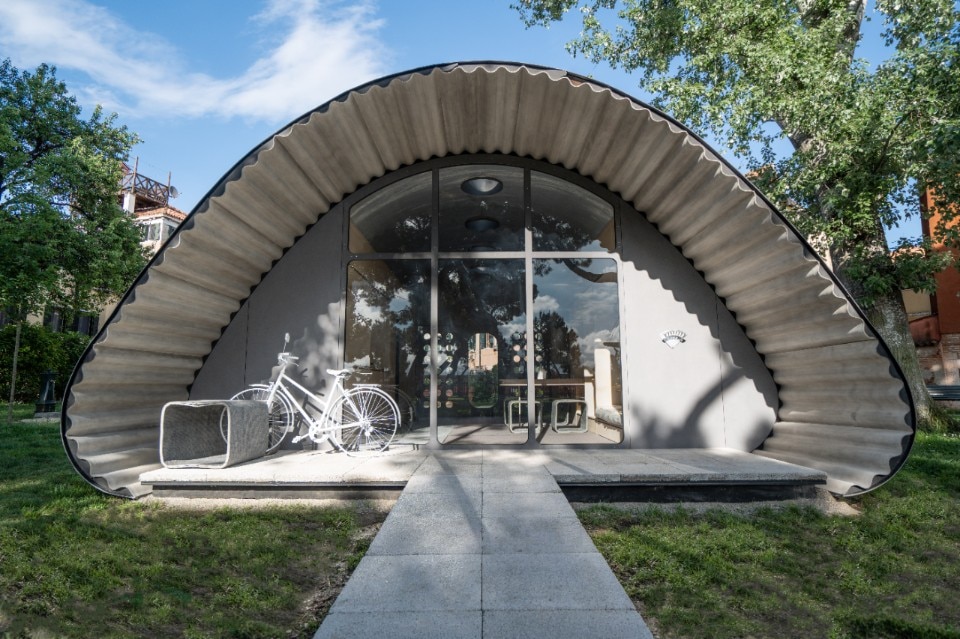Of a world population of 8.1 billion people, the United Nations estimates that 1.6 billion suffer from inadequate housing conditions. This urgent problem must be tackled through both national policies and local government regulations. According to the World Green Building Council, 80 per cent of cities worldwide lack affordable housing solutions for the majority of their populations, and the situation is getting worse. UN-Habitat calculates that the world needs to build 96,000 new homes every day to house the estimated 3 billion people who will need access to adequate housing by 2030. This problem is not specific to cities. Today, many of the world’s 103 million forcibly displaced people seek shelter in camps conceived as low-cost temporary solutions, but which in reality become permanent settlements where families can spend decades, even generations.
The Norman Foster Foundation, working with Holcim, has pursued an alternative approach, advocating more durable, high-performance and fast-to-build refugee structures to create homes rather than shelters. Following ideas developed by the foundation’s scholars and mentors during a Shelters Workshop in 2022, Holcim invited Norman Foster and his team to continue exploring these challenges. Together they developed the Essential Homes Research Project, which was presented with two interventions at the 2023 Venice Architecture Biennale.
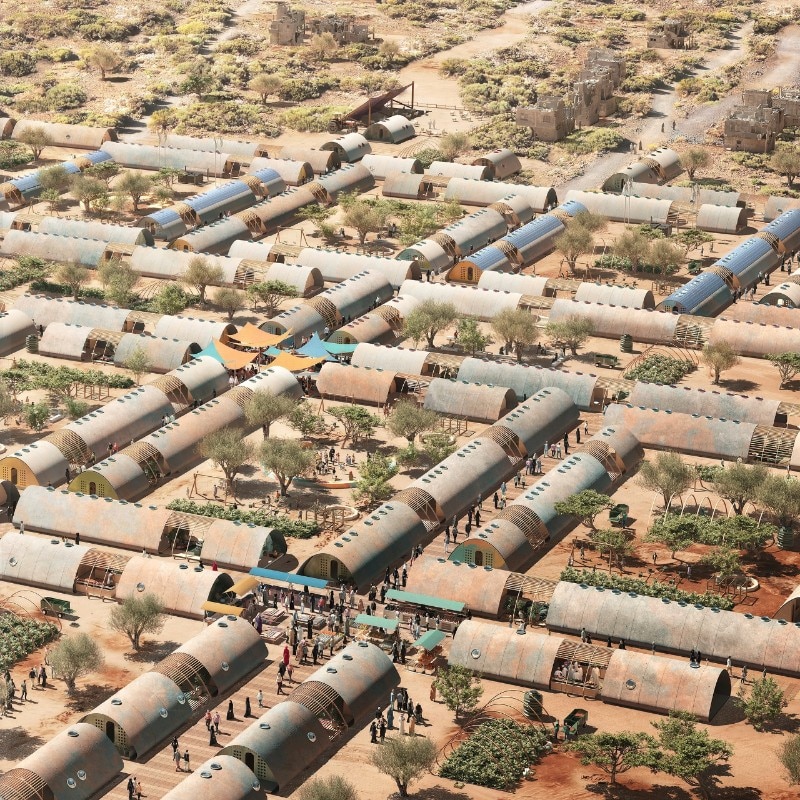
The first was a full-size Essential Home prototype at the Giardini della Marinaressa. Sustainable and durable, it was built using rollable canvas impregnated with low-carbon concrete that, with the application of water, forms a strong shell. This can be retrofitted with insulation to improve interior comfort, and flooring tiles made of low-carbon concrete and luminescent aggregates for wayfinding and lighting. The fully recyclable structure can be erected in 4 days and its carbon footprint is 70 per cent less than a house of the same size built with traditional techniques. Designed to last for more than 25 years, the incremental modular system can respond to the needs of displaced families, with the basic structure upgraded over time into an expanded home.
The second intervention, at Palazzo Mora, engaged the historical context of temporary structures and prefabrication. With drawings, renderings, videos, models and materials, the exhibition showcased the Essential Homes Research Project and reflected on how housing for displaced people could translate into sustainable buildings for all. The project was awarded the Architectural Innovation of the Year prize in the Global Architecture Design Awards 2023, attracting interest from individuals and governments. The Essential Homes concept is being expanded from a single detached house to a row housing scheme for the creation of new affordable and sustainable neighbourhoods. Rather than erecting arrays of identical buildings, the project will foster the creation of thriving, integrated communities with public spaces, walkable streets, public transport, mixeduse buildings and green spaces. These cross-cutting ideas apply to both developed and underdeveloped communities. Just as everyone is entitled to a dignified house, everyone should be entitled to live in a healthy environment where their basic needs are met.
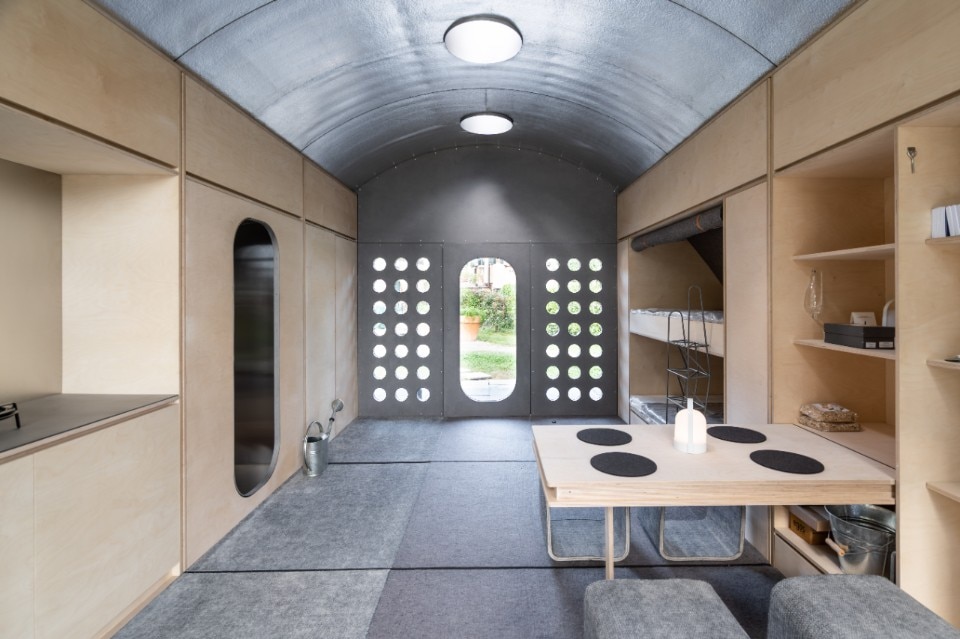
The Norman Foster Foundation also worked with Tata Trusts and the Government of Odisha, India, on the Odisha Liveable Habitat Mission, which won the 2018 World Habitat Award. The project combined a revolutionary political decision to give land rights to informal settlement dwellers with an urban intervention aimed at upgrading these locations. The foundation’s team maintained a constant presence in Odisha for the project. The coastal fishing village of Nolia Sahi was one of several locations chosen by the government for action, with an exemplary project that adopted a bottom-up approach. Community interests were identified and three groups were singled out for consultation: the fishermen and business owners; the men; and the women. Using a three-dimensional model of the settlement, these consultations revealed the key importance of the beach and principal routes.
The Norman Foster Foundation has pursued an alternative approach, advocating more durable, high-performance and fast-to-build refugee structures to create homes rather than shelters.
The beach strip was the focus of the first group, which stressed the need for spaces to lay out nets and dry fish. This overlapped with concerns from residents of this zone, whose homes were exposed to storms blowing in from the sea. Ideally, the coastal strip’s inhabitants would be moved to safer locations, thereby also freeing up space for the fishermen’s activities. New tree planting along this southern edge would protect against the prevailing winds and storms, as well as beautifying and providing shade.
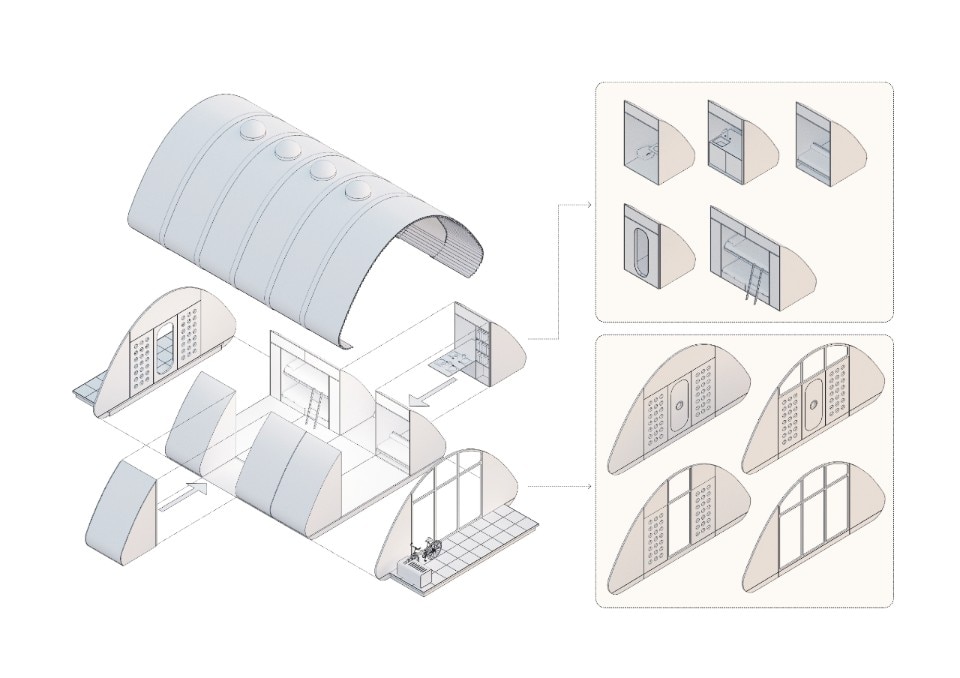
The second group focused on the diagonal thoroughfare in the heart of the community, connecting the economically dynamic beachfront with the social area of the cyclone shelter. This route would be reinforced with better connections and extended to the settlement’s more recent expansion.
The women’s group, by far the most politically active, was concerned with improving access to homes for emergencies, security and health. They proposed more routes to connect with the northern area, crossing the diagonal route and onto the coastal strip. This would increase access from 63 per cent of homes to 93 per cent. Cross-group initiatives also emerged, such as draining the wetland on the northern edge to provide expansion space for the community, as well as enabling the relocation of residents from the beach areas. Communal spaces and facilities were proposed at junctions between the key routes. Communal bathroom blocks would be distributed at selected crossroads to aid the transition from open sanitation – where women used the northern edge and men the southern part – to individual bathrooms in regenerated homes.
The development of the master plan also involved public exhibitions and workshops in local schools, with children marking new outdoor spaces on models with sticks. The eventual blueprint was adopted at a town hall-style meeting that was primarily attended by women from the community, who voted by a show of hands. Thanks to parallel negotiations with the government, in little over a year the master plan’s implementation was well underway, with the draining of the wetland, the paving of new routes and public spaces, the creation of playgrounds and the transition to modern sanitation.
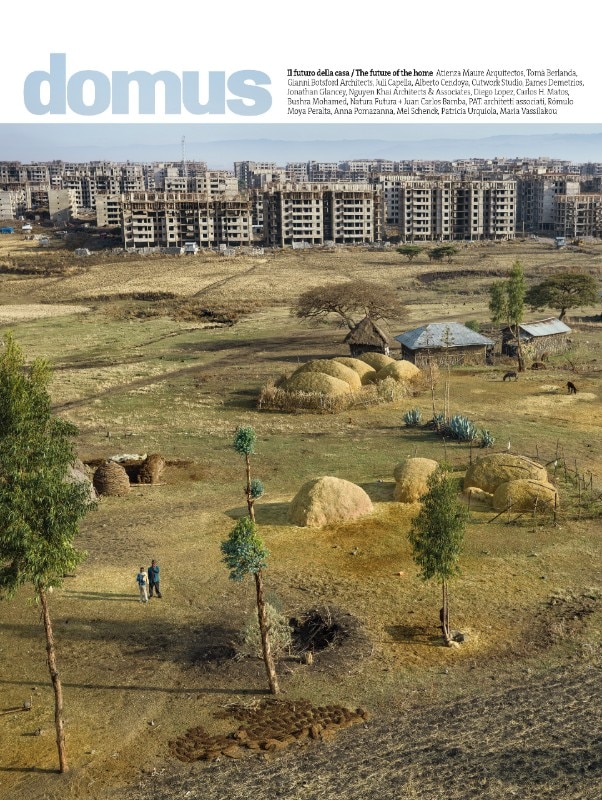
Although halted by Covid-19, the Odisha initiative confirmed the potential for regenerating slums by building on a place’s identity rather than bulldozing and moving communities away from their source of livelihood. It also validated a bottom-up approach to master planning, showing that it is far more fruitful to use design skills to group citizens based on their needs and aspirations rather than to impose preconceptions. The process was facilitated by the small size of Odisha’s communities, but the methods are scalable.
The Essential Homes and Odisha initiatives exemplify how problems concerning the future of our homes and communities can be tackled from different perspectives at the same time. Integrated multi-scale interventions will mitigate the current housing deficit and give neighbourhoods hope for the future.
Opening image: Full-scale prototype of the Essential Home designed by the Norman Foster Foundation with Holcim and presented at the Giardini della Marinaressa, Venice, during the 2023 Architecture Biennale. Photo © Chiara Becattini


